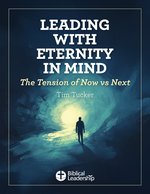Why you should use stats in ministry
 iStock
iStock
I love statistics! I know what you're thinking … I'm a nerd. Possibly. But, the truth is there are more nerds than you realize when it comes to statistics.
It isn't that I know nothing of sports; I just haven't kept up much.
Even though I haven't been that guy as a sports fan, Donna and I went to see Moneyball while it was in theaters a few years back. Now, almost everyone thought it was a movie about baseball—or about Brad Pitt—but it wasn't. At least not at the core.
Moneyball was all about statistics—analyzing players' performance, then selecting and playing those players based upon advanced stats. Home runs, hits, runs scored, and RBIs were recreated in aggregate, often using cast-off players, rather than one superstar player. It was a revolutionary approach to the game, and it was based on a statistical foundation.
Statistics, of course, aren't limited to sports. What about those of you who are investors? Do you research the performance of a company that you are thinking about investing your money in? Sure you do.
What about those who have an important and possibly dangerous surgery coming up, do you want to know the odds of a successful surgery and recovery? Of course. Very few people want to go into it with no idea of the possible outcomes.
Numbers and statistics are part of our daily lives. Pastors and church leaders should embrace them as part of ministry.
How then do we use them?
Before I share how we should use statistics, let me share why some uses fail. Statistics shouldn't be used to change a priori assumptions. For instance, we should not stop trusting scripture simply because someone may get up and say 74% of people believe the Bible isn't what we think it is, so let's stop believing it. The truth is that the Bible is authoritative regardless of what others say.
Also, statistics shouldn't be used to determine how we do ministry. For instance, just because someone gets up and says that 90 percent of the church plants today implement the Launch Big model, doesn't mean we should implement the same model in our next church plant.
Statistics shouldn't be used to change our definitive beliefs nor determine how we do ministry. But they can be used in the following ways.
Statistics help define reality.
Have you ever heard the statement, "facts are our friends"? It's true. Statistics can be our friends in helping us determine reality. Statistics provide us information on people's thoughts and behaviors. In short, they give us a starting point. For example, one research project showed the majority of people in the 7,000 subject churches were not using their gifts.
For many pastors and leaders this would have come as a shock. Others may say, "That explains a lot." Either way, it helps pastors and leaders understand reality both for themselves, their church's leaders, and other members.
Statistics help teach people.
Beyond defining reality, statistics can be used to help people understand how the church is engaging or not engaging. Research can demonstrate how the church thinks and why the church responds to certain issues.
Research is often a needed tool pastors can use to change a church's opinion. If a pastor says, "We should build a gym to help the community" the church might question the expense. But, if the pastor says, "Ten percent of the population within 3 miles of our church are under 17 years old, and most of them have nothing to do after school. If we built a gymnasium we could run multiple ministries to meet their needs and maybe open their hearts to the gospel." Those statistics paint a different picture that help many understand why the cost might be worth it.
Statistics help leaders make strategic decisions.
The first use of statistics helps us define reality by giving us a basis and foundation. The second use of statistics helps us teach people, especially our leaders and members. The third, and probably most important, use of statistics is that they help us make strategic decisions.
If churches understood that one of the reasons why people weren't using their gifts was because they didn't know how, the leaders could then make strategic decisions as to how they should teach their people to use their gifts. As a result, churches could offer classes, produce material, preach a series, or write a blog series on spiritual gifts with the goal of reversing the statistics by changing the reality.
Statistics can also help determine what staff member to add next, when and where to have small groups, how many groups can be started each new semester, or how demographic changes should change outreach efforts.
In short, statistics are a great tool to assist pastors and leaders in being more effective and leading their churches or organizations to be more effective as well.
More on Church Leadership and Administration
- Video: A first step to an outward-focused church Is … (by Bob Whitesel)
- Taking church to where people already are (by Bob Whitesel)
- Eight essentials for guest-friendly church bulletins (by Thom Rainer)
- Eleven observations about church transfer growth (by Thom Rainer)


